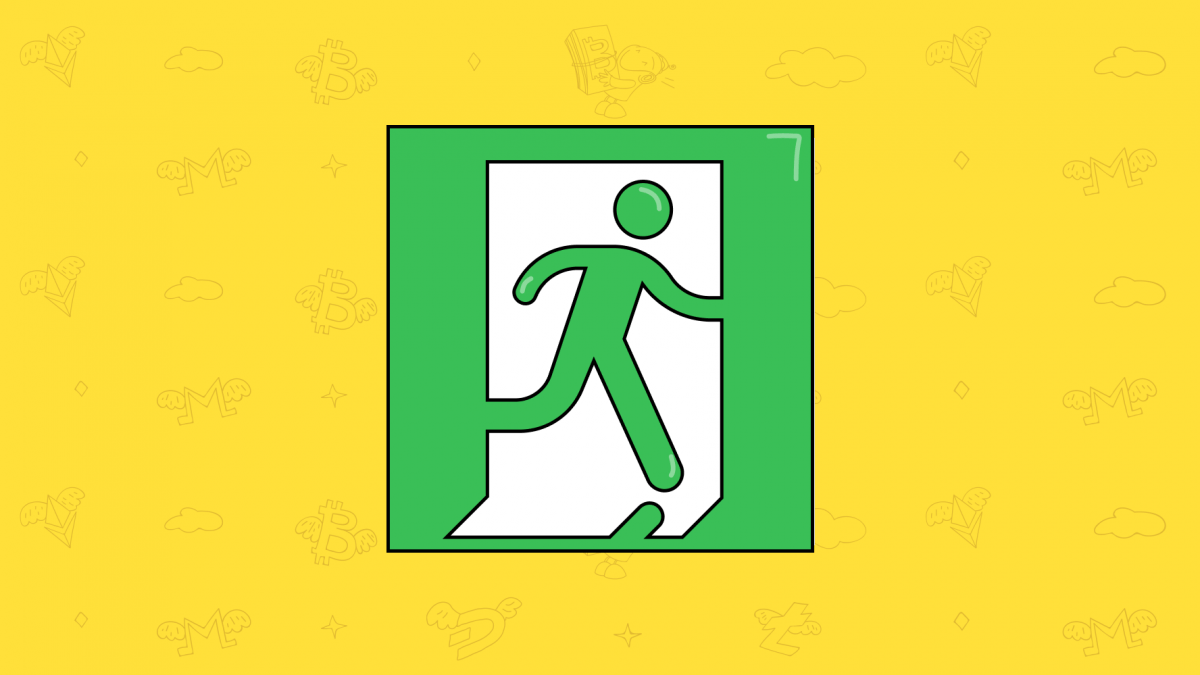Entering a cryptocurrency trade at a good moment isn’t a simple task alone. But exiting a trade can be far more challenging. The absence of exit strategy may result in taking premature profits or in unwillingly becoming a hodler of an altcoin. In our today’s article we’ll cover the exit strategies and discuss exit peculiarities of different trading styles.
Keep calm and close the deal
Exiting a trade means closing a deal with either profit or loss at a certain point. While it’s possible to adapt holding period and reward level of your position to the cryptocurrency market conditions, it’s important to grow discipline and follow exit parameters of your original strategy. First rule for a trader is to put his emotions aside, especially in crypto when a coin can skyrocket in one day and hit new lows the next. Many beginners panic if the crypto asset is going in the opposite direction from their trade and close their position with losses. There’s also danger for emotional investors if the market’s performing too well since they may be tempted to hold an asset even when the Take Profit level they set has been achieved.
Before starting a trade, set time limit after which you’ll close a deal even if your desired profit hasn’t been reached. The exit timeframes differ across trading styles. Day traders normally don’t leave any open position overnight, if Take Profit level hasn’t been reached they exit a position with lesser profit or with the loss before the day ends. For long-term crypto traders making an exit may be a little bit trickier. Position traders should be comfortable with market not going in the direction they planned for days or even weeks. Choose a trading style that suits you best and set exit time frames in accordance with your style.
Your Two Best Friends: Take Profit and Stop Loss
The two basic principles in exiting a trade is setting Take Profit (T/P) levels and setting Stop Losses (S/L). Technical analysis is essential to place optimal T/P and S/L losses. Make sure the market trend goes in your direction. Place Stop Loss slightly below support level for long strategy (Learn Support and Resistance levels) and Take Profit near the resistance level. Some people place Stop Loss at the same fixed values (e.g 5% or 50 cents) for all pairs without accounting for a pair’s specific. These can result in S/L orders executed to early for very volatile cryptocurrency pairs and too late for pairs traded in a narrow range. Make your own research and fine-tune S/L value for each specific pair and timeframe.
It’s recommended to maintain a risk-reward ratio of at least 1:2 when placing S/L and T/P orders. The ratio is calculated by dividing the amount you’re prepared to lose by the profit you desire to achieve. Trailing S/L can be also very handy for day traders, although it should be used cautiously since it can lead to losses if placed with too little distance. If volatility is high and price constantly bounces back down, Trailing S/L may be executed before Zero-level Profit is reached.
Bonus Tip
If you have a large trade, you may scale the trade the following way: once you reach zero level of Take Profit place Stop Loss there (which turns your trade into a “free” one), then divide your trade into three parts placing them at e.g. 75% of reward, at the reward level and at the price exceeding the reward e.g. 25% of it’s value. The order placed above the initial reward level gives you a chance to follow the market uptrend and gain extra profit while reducing the risks.
If you’ve automated your trading strategy with TradeSanta, make sure your Take Profit level is adjusted to the market conditions and your crypto bot direction doesn’t contradict a trend. Devise a strategy in case your trade went against you – whether you want to cancel the deal and exit a trade or decide on a holding period. Sometimes it may be best to exit a trade with a loss to free the liquidity for other trades. But the most important thing is not to panic and follow your initial guidelines. Take advantage of the opportunity to launch both long and short trading bots at the same time.
FAQ
What does exiting a trade mean?
Exiting a trade means closing a deal with either profit or loss at a certain point.
What should you do when exiting a trade?
The two basic principles in exiting a trade is setting Take Profit (T/P) levels and setting Stop Losses (S/L).
Are there any tips for exiting a trade?
If you have a large trade, you may scale the trade the following way: once you reach zero level of Take Profit place Stop Loss there, then divide your trade into three parts placing them at e.g. 75% of reward, at the reward level and at the price exceeding the reward e.g. 25% of it’s value.
